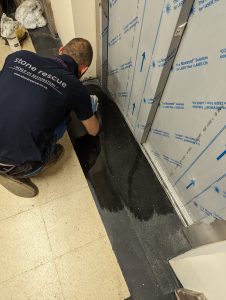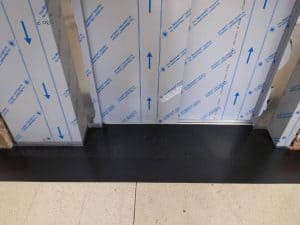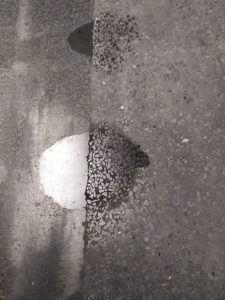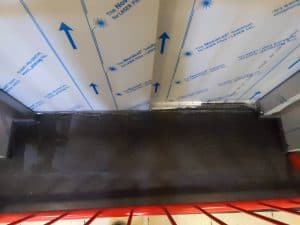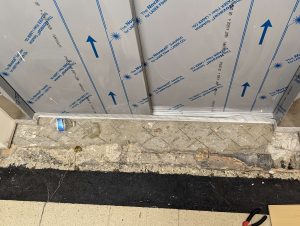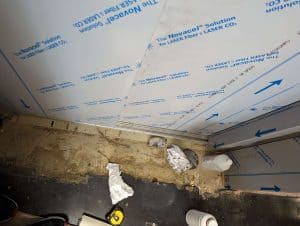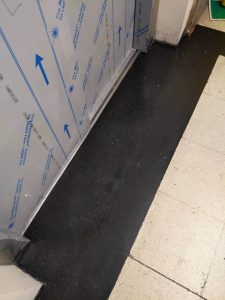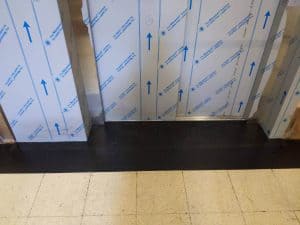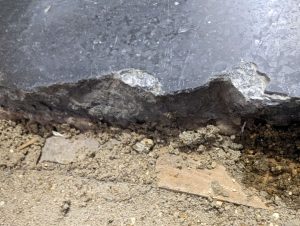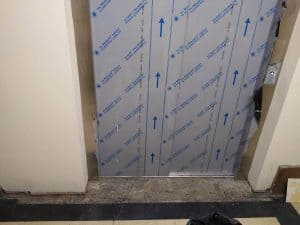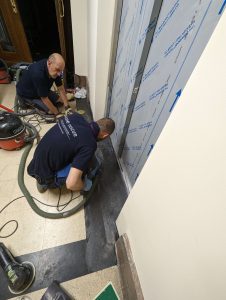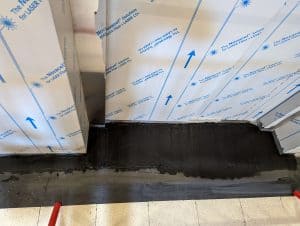Description: In-situ and restore terrazzo floor
Location: Town Hall in London
Material: Terrazzo
Lay in-situ terrazzo is a popular flooring material recognised for its resilience, versatility, and aesthetic appeal. When it comes to harmonising existing floors or restoring terrazzo, numerous factors, implications, and procedures must be considered. Let’s investigate these facets in greater depth.
Matching Existing Floors: When the objective is to match an existing terrazzo floor, it is crucial to appraise the original floor’s characteristics to ensure a seamless integration. Here are some important considerations:
Colour and Design: Analyse the existing floor’s colours, patterns, and aggregates. This information will aid in selecting the proper materials to recreate the same appearance.
Selection of Aggregates Terrazzo is a mixture of aggregates (such as marble, granite, or quartz) bonded with a cementitious material (traditional method). It is essential to match the size, colour, and type of aggregates to achieve a uniform appearance.
Sample Preparation: Create small sample sections of the terrazzo using the selected aggregates and adhesive to verify the accuracy of the match. Before proceeding with the full installation or restoration, this phase allows for adjustments and fine-tuning.
Terrazzo restoration is the process of restoring an existing terrazzo floor to its original condition by repairing any damage, erosion, or discolouration that may have occurred over time. Typically, the restoration procedure comprises the following steps:
- Assess the condition of the flooring to get started. Identify any fractures, chips, stains, or areas where the terrazzo is loose or deteriorating.
- Prepare the area by clearing it and protecting adjacent surfaces. Remove any debris, furnishings, or fixtures that could impede the restoration process.
- Address damaged areas by repairing cracks, filling in holes, and replacing missing or broken terrazzo pieces. The objective is to obtain a uniform, smooth surface.
Grinding and Polishing: Utilise grinding machinery with progressively finer diamond abrasives to remove the terrazzo’s top layer, exposing new aggregate and removing surface flaws. This procedure is typically performed in stages to accomplish the desired result.
Honing and Polishing: Refine the terrazzo surface by honing and polishing it with increasingly finer grains. This phase improves the terrazzo’s sheen and clarity, giving it a smooth and reflective appearance.
Sealing and Protection: Protect the restored terrazzo from stains, moisture, and abrasion by applying an appropriate sealer. This procedure contributes to the durability and appearance of the floor.
Restoring or matching terrazzo floors requires skill, specialised equipment, and a comprehensive comprehension of the materials involved. Consider the following implications and methods:
Terrazzo restoration and matching are complex processes that frequently necessitate the skills of seasoned artisans or specialised restoration companies. Hiring professionals guarantees a high-quality outcome and reduces the risk of floor damage.
Material Sourcing: Sourcing the proper aggregates, binder, and colourants is crucial for matching an existing terrazzo floor.
After the terrazzo floor has been restored or matched, appropriate maintenance is essential to prolong its lifespan. Regular cleansing, the use of appropriate nonabrasive products, and the implementation of appropriate maintenance schedules will aid in preserving the floor’s aesthetics and functionality.
Before & After
Pictures
